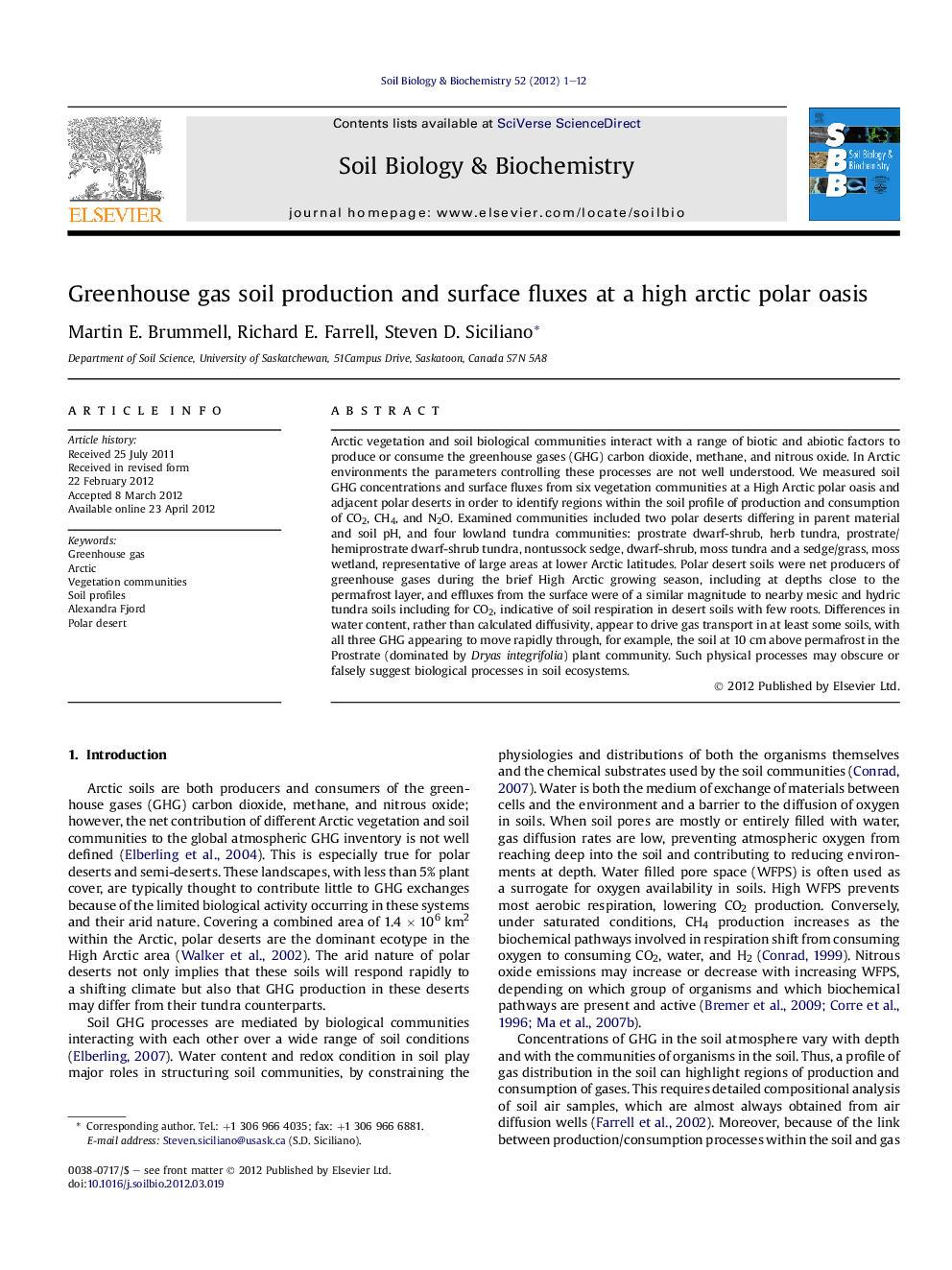| Article ID | Journal | Published Year | Pages | File Type |
|---|---|---|---|---|
| 2024979 | Soil Biology and Biochemistry | 2012 | 12 Pages |
Arctic vegetation and soil biological communities interact with a range of biotic and abiotic factors to produce or consume the greenhouse gases (GHG) carbon dioxide, methane, and nitrous oxide. In Arctic environments the parameters controlling these processes are not well understood. We measured soil GHG concentrations and surface fluxes from six vegetation communities at a High Arctic polar oasis and adjacent polar deserts in order to identify regions within the soil profile of production and consumption of CO2, CH4, and N2O. Examined communities included two polar deserts differing in parent material and soil pH, and four lowland tundra communities: prostrate dwarf-shrub, herb tundra, prostrate/hemiprostrate dwarf-shrub tundra, nontussock sedge, dwarf-shrub, moss tundra and a sedge/grass, moss wetland, representative of large areas at lower Arctic latitudes. Polar desert soils were net producers of greenhouse gases during the brief High Arctic growing season, including at depths close to the permafrost layer, and effluxes from the surface were of a similar magnitude to nearby mesic and hydric tundra soils including for CO2, indicative of soil respiration in desert soils with few roots. Differences in water content, rather than calculated diffusivity, appear to drive gas transport in at least some soils, with all three GHG appearing to move rapidly through, for example, the soil at 10 cm above permafrost in the Prostrate (dominated by Dryas integrifolia) plant community. Such physical processes may obscure or falsely suggest biological processes in soil ecosystems.
► In this study we examine soil gas profiles and fluxes in Arctic ecosystems. ► We find considerable greenhouse gas activity in polar desert soils. ► Unexplained concomitant consumption of gases was found in one vegetation community.
